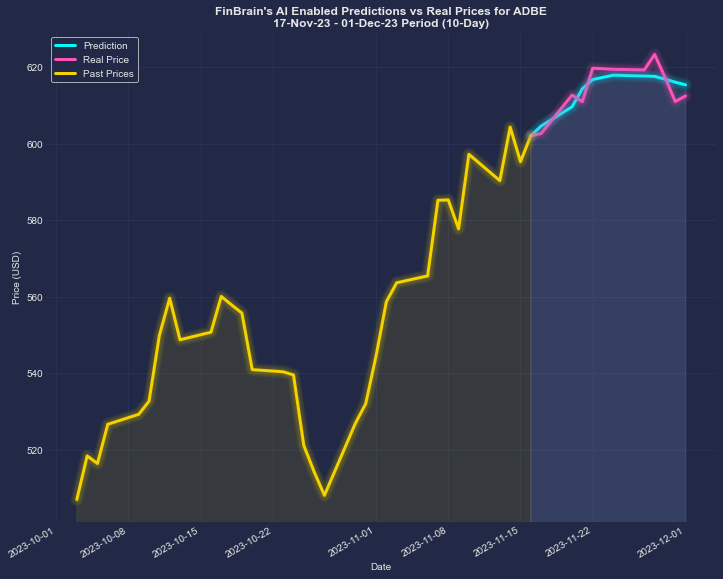Begin small and gradually increase the size of your AI trades in stocks. This approach is great to navigate high-risk environments, such as the penny stock market or copyright markets. This strategy allows you to gain experience and refine your models while minimizing the risk. Here are 10 top tips for gradually scaling up your AI-based stock trading operations:
1. Prepare a clear plan and a strategy
TIP: Define your trading goals along with your risk tolerance and your target markets (e.g. penny stocks, copyright) before diving in. Start by managing only the smallest portion of your overall portfolio.
What’s the reason? A clearly defined plan helps you stay focused and helps you make better decisions when you begin with a small amount, which will ensure longevity and growth.
2. Test your Paper Trading
Start by simulating trading using real-time data.
Why: You will be capable of testing your AI and trading strategies under live market conditions before sizing.
3. Choose a Low-Cost Broker or Exchange
Make use of a trading platform or brokerage that charges low commissions, and which allows you to make small investments. This is especially helpful for those who are just beginning using penny stocks or copyright assets.
Examples for penny stocks: TD Ameritrade, Webull E*TRADE.
Examples of copyright: copyright copyright copyright
The reason: reducing commissions is crucial especially when you trade smaller amounts.
4. Initial focus was on one asset class
Tip: To simplify and concentrate the process of learning your model, begin with a single type of assets, like penny stock or cryptocurrencies.
Why? By focusing on one type of asset or market, you can build expertise quicker and gain knowledge more quickly.
5. Use Small Positions
To minimize the risk you take Limit the size of your position to a tiny part of your portfolio (1-2 percent per trade).
Why is this? Because it allows you to reduce losses while fine-tuning your AI model and gaining a better understanding of the market’s dynamic.
6. Gradually Increase Capital As You Build Confidence
Tip. If you’ve observed positive results over a period of months or quarters You can increase your trading capital when your system has proven to be reliable. performance.
Why? Scaling allows you to build up confidence in the strategies you employ for trading and managing risk prior to placing larger bets.
7. Priority should be given to an easy AI-model.
Start with the simplest machine models (e.g. a linear regression model, or a decision tree) to predict copyright prices or stocks prices, before moving on to complex neural networks as well as deep learning models.
What’s the reason? Simpler models are easier to understand how to maintain, improve and enhance these models, especially when you are just beginning your journey and learning about AI trading.
8. Use Conservative Risk Management
Tips: Make use of conservative leverage and rigorous measures to manage risk, such as strict stop-loss orders, a the size of the position, and strict stop-loss guidelines.
The reason: Risk-management that is conservative can prevent large trading losses early on during your career. It also guarantees that you are able to expand your strategy.
9. Reinvest the profits back in the System
TIP: Instead of withdrawing early profits, reinvest them to your trading system in order to improve the model or scale operations (e.g. upgrading your hardware or increasing trading capital).
The reason: Reinvesting profits allows you to increase returns over the long term and also improve your infrastructure to handle more extensive operations.
10. Review and Improve AI Models on a Regular basis
You can enhance your AI models by checking their performance, adjusting algorithms or improving feature engineering.
Why is it important to optimize regularly? Regularly ensuring that your models are able to adapt to changes in market conditions, enhancing their predictive capabilities as your capital increases.
Bonus: Diversify Your Portfolio After Building the Solid Foundation
TIP: Once you have established an established foundation and showing that your method is successful over time, you might look at expanding your system to other asset types (e.g. shifting from penny stocks to more substantial stocks, or adding more copyright).
Why: Diversification reduces risk and boosts returns by allowing you to take advantage of market conditions that differ.
Start small and scale gradually, you can master how to adapt, establish an understanding of trading and gain long-term success. Have a look at the top right here for blog tips including stock trading ai, trading bots for stocks, copyright ai bot, investment ai, ai for stock trading, ai for trading stocks, ai penny stocks, best ai trading bot, incite, best ai trading bot and more.

Top 10 Tips To Improve Quality Of Data In Ai Predictions, Stock Pickers And Investments
Emphasizing data quality is critical to AI-driven stock selection as well as investment forecasts and predictions. AI models that make use of quality data are more likely to make reliable and accurate choices. Here are 10 suggestions to increase the quality of data used by AI stock pickers.
1. Prioritize clean, well-structured data
Tip: Make certain your data is free of mistakes and is organized in a consistent way. It is also important to eliminate duplicates, addressing missing values and ensuring data uniformity.
Why: AI models are able to make better decisions when using well-organized and clean data. This results in better predictions, and less mistakes.
2. For real-time data and timeliness, ensure that the system is up-to-date
TIP: For precise predictions take advantage of actual-time, current market information, including the volume of trading and prices for stocks.
Why is it important? It is crucial to allow AI models to be able to accurately reflect actual market situation. This is especially important in markets that are volatile, such as penny stocks and copyright.
3. Data from reliable suppliers
Tip: Only choose the data providers that are reliable and have been thoroughly scrutinized. This includes financial statements, economic reports as well as price feeds.
Why: By using reliable sources, you reduce the possibility of data errors or mistakes that could compromise AI model performance. This can cause inaccurate forecasts.
4. Integrate multiple data sources
Tip – Combine information from multiple sources (e.g. financial statements, news sentiments and social media data), macroeconomic indicators, as well as technical indicators.
Why: A multisource approach provides an overall market view that allows AIs to make more informed choices by capturing different aspects of stock behaviour.
5. Focus on historical data for backtesting
TIP: When testing AI algorithms it is essential to gather high-quality data in order for them to perform effectively under different market conditions.
Why: Historical Data helps to refine AI models. You can test trading strategies by simulation, to determine potential risks and returns as well as ensure AI predictions that are robust.
6. Check the validity of data on a regular basis
Tips – Ensure that you regularly audit the quality of your data and confirm the accuracy by looking for inconsistencies. Also, make sure to update old information.
The reason: Continuous testing assures that the information input into AI models is reliable. This decreases the chance of inaccurate predictions made on the basis of outdated or faulty information.
7. Ensure Proper Data Granularity
Tips: Choose the data level that best fits your plan. For example, you can utilize minute-by-minute data for high-frequency trading, or daily data for long-term investment.
Why: The right granularity of data is crucial to help your model achieve its objectives. For instance, trading strategies that are short-term strategies can benefit from high-frequency data while long-term investing requires more extensive, low-frequency data.
8. Incorporate other data sources
Consider using alternative data sources such as satellite imagery, social media sentiment or web scraping for tracking market developments and news.
The reason: Alternative data can give you a unique perspective on market behaviour. Your AI system can gain competitive advantage by identifying trends which traditional data sources might miss.
9. Use Quality-Control Techniques for Data Preprocessing
Tips. Use preprocessing techniques such as feature scaling, normalization of data, or outlier detection to enhance the quality of your raw data prior to the time you feed it into AI algorithms.
The reason: Processing the data properly will ensure that AI models can discern it with accuracy. This can reduce the chance of mistakes in prediction and boost overall model performance.
10. Track Data Digressions and adapt models
Tip: Watch data drift to check how the data’s characteristics change over time, and then modify your AI models accordingly.
The reason: Data drift can negatively impact model accuracy. By detecting, and adapting to shifts in the patterns in data, you can ensure that your AI remains efficient over time especially on markets that are dynamic such as copyright or penny stocks.
Bonus: Keep an improvement loop in the feedback loop that helps improve data
Tip Establish a feedback system where AI algorithms constantly learn new data from performance results and enhance their data collection.
The reason: Feedback loops allows you to refine data quality over time, and ensures that AI models evolve to reflect the current trends and market conditions.
It is essential to put the highest importance in the quality of data order to maximise the potential of AI stock pickers. AI models are more likely produce accurate predictions when they are provided with reliable, high-quality and clean data. Follow these steps to ensure that your AI system is using the best possible data for predictions, investment strategies and the selection of stocks. Check out the recommended best copyright prediction site blog for blog info including ai stock analysis, ai copyright trading, ai for trading stocks, ai penny stocks to buy, stock trading ai, ai stock market, ai for stock trading, ai copyright trading bot, artificial intelligence stocks, trading with ai and more.

Leave a Reply